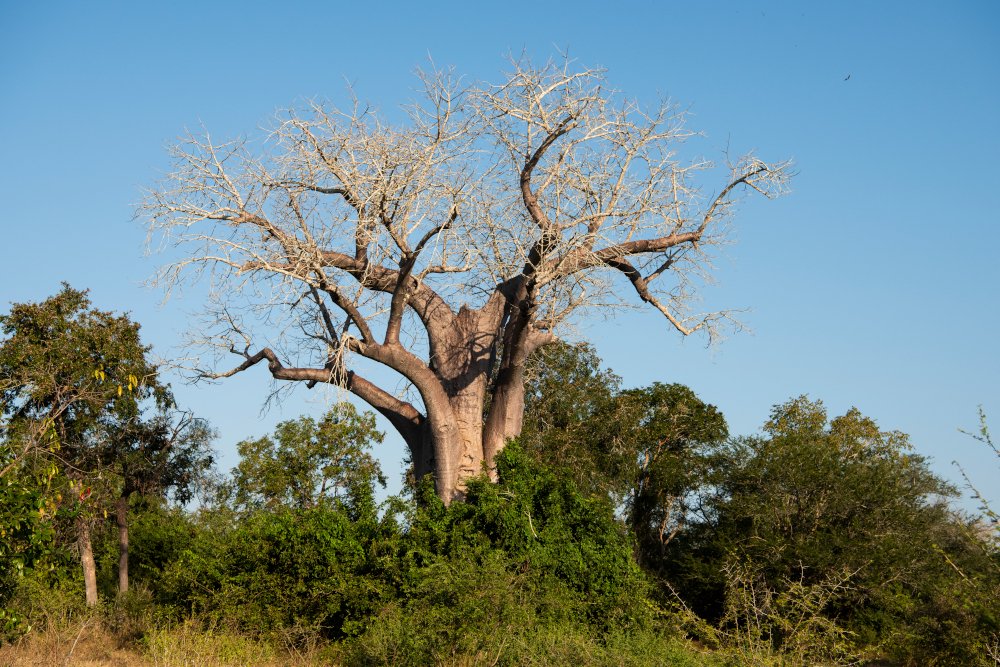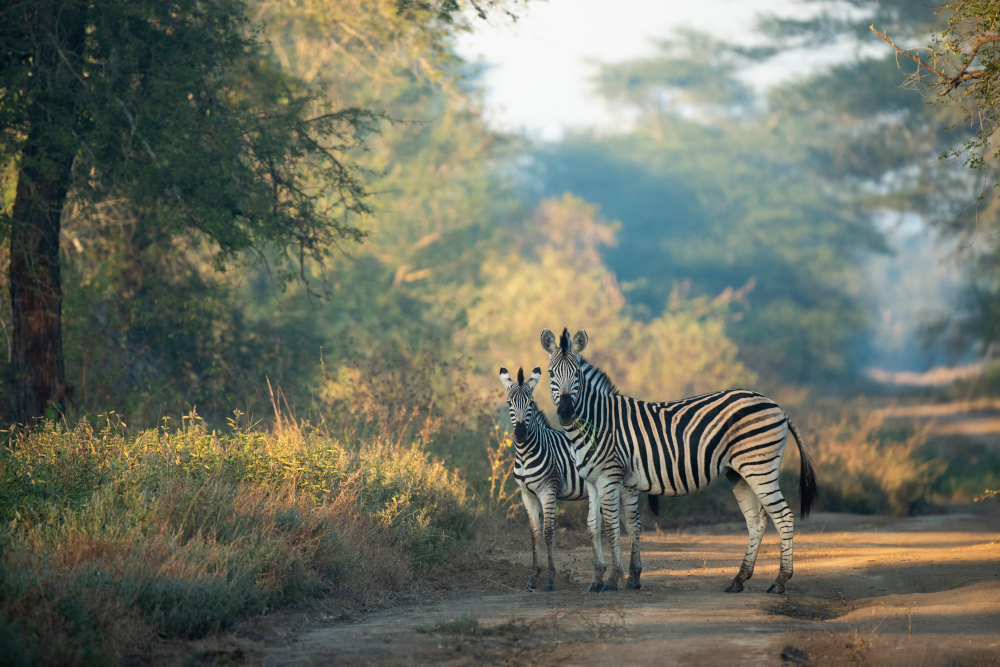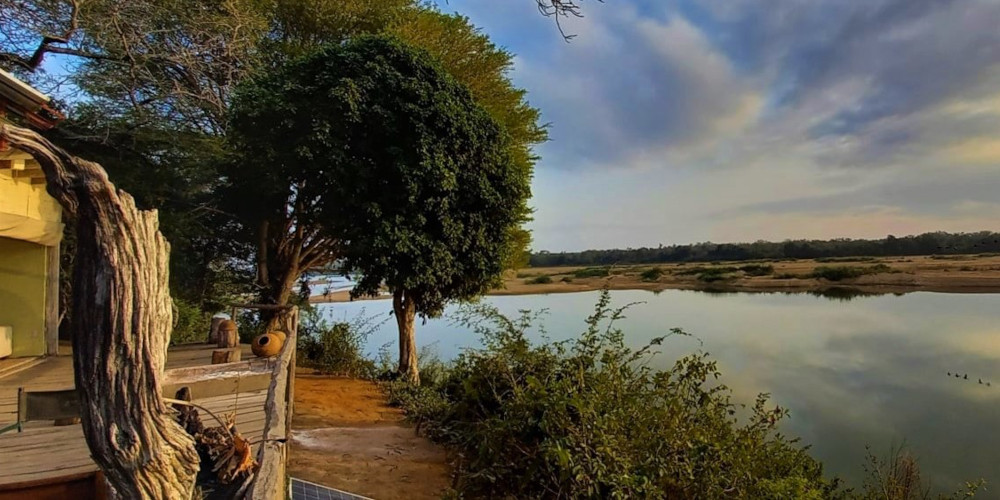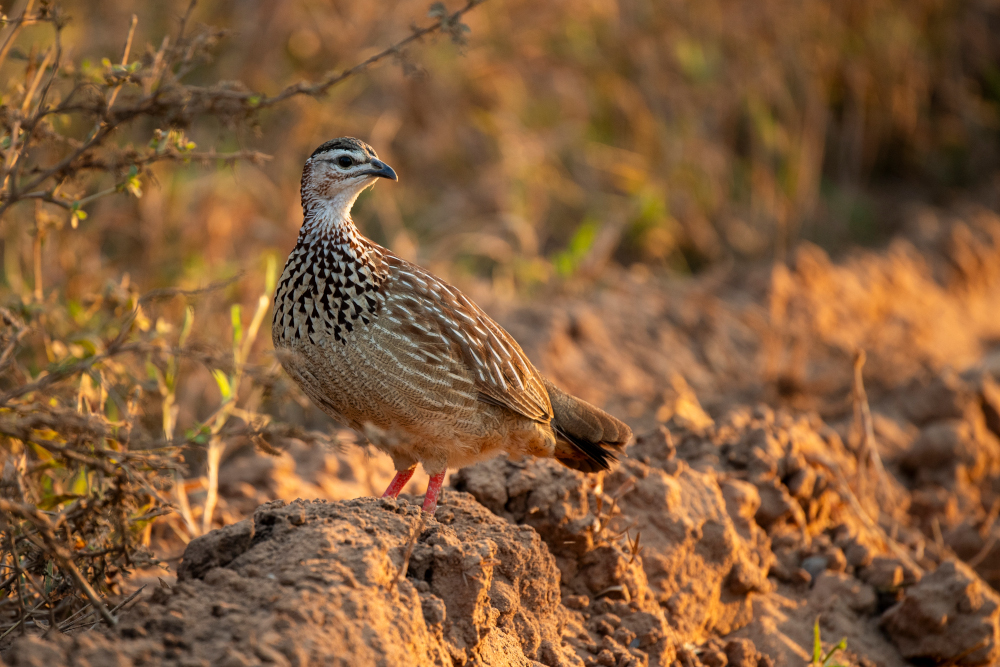Do you enjoy remote wildlife destinations and plan on driving a 4×4 to Mozambique soon? Then think about adding Zinave National Park to your itinerary. By Philip Briggs
Zinave is the most northeasterly component of the Great Limpopo Transfrontier Conservation Area. This vast cross-border sprawl across South Africa, Mozambique and Zimbabwe incorporates Kruger and Gonarezhou. In Zinave, overlanders have one of Southern Africa’s most exciting emergent budget safari destinations.
Bounded to the north by the Save River as it flows east from Gonarezhou towards the Indian Ocean, Zinave measures 4,080km2. It protects a tract of baobab-studded knobthorn, miombo and mopane woodland that was set aside as a national park back in 1972. As with many parks in Mozambique, it suffered from high levels of poaching during the civil war (1977–1992). Indeed, by the late 1990s, most major game species were gone, and Zinave’s status as a national park had little significance outside the statute books.

That changed in 2015, when Zinave became the subject of a co-management agreement signed by the Mozambican Government and the Peace Parks Foundation. At Zinave, a combination of improved anti-poaching measures, intensified engagement with local communities and an ambitious rewilding program has led to a dramatic reversal. The focal point is a fenced 186km2 core sanctuary into which several thousand head of translocated wildlife has been released. Elephant, buffalo, rhino, giraffe, zebra and various antelope have made Zinave their home. Lions and leopards have also found their way in, meaning the park now supports all the Big Five. And plans are already in place to extend the area of the core sanctuary, eventually allowing wildlife to roam freely throughout the park.

Campsite on the Save River
Encouraged by glowing feedback from other travellers, we decided to check out Zinave for ourselves. In June 2023, we travelled there from Vilanculos, continuing westwards via Mapai and Pafuri to South Africa. We set off slightly apprehensively in the wake of Cyclone Freddy, which had raged across large parts of Mozambique. Just a couple of months earlier, several roads in the country were submerged. But we were pleasantly surprised at the quality of the unsurfaced approach roads, which were mostly cruisable at speeds of 40-60km/h.
We explored the park from Tondo, a likeable (and affordable) self-catering camp. Perched on the south bank of the Save River, it lies in the heart of the core fenced sanctuary. Here we slept in one of several basic but comfortable standing tents erected on platforms in the riverine forest. Visitors also have the choice of pitching their own tent. To the sound of hippos grunting in the river and owls hooting overhead, we fired up a braai. We enjoyed the sociable vibe at Tondo, chatting to the few other guests and researchers present over evening drinks. But travellers preferring solitude can ask about camping elsewhere in the park, provided they are fully self-sufficient.

Wildlife and bird sightings
We found game drives in Zinave to be surprisingly productive. Among the more common large mammals are zebra, wildebeest, impala, nyala, greater kudu, waterbuck, common duiker and warthog. All of these are likely to be seen on any given drive. Over the course of three days we also encountered a few giraffes and enjoyed one-off sightings of small herds of buffalo and eland. We even saw a white rhino mother and young crossing the road. We were not so lucky with elephants, but we regularly encountered fresh evidence of their activity in the form of moist dung and tree damage. Aside from lion and leopard, Zinave’s carnivores include spotted hyena and jackal. However, predator densities are still very low and sightings of these shy creatures extremely rare.

There’s plenty in Zinave to keep birdwatchers interested. Typical bush birds include lilac-breasted roller, yellow-billed hornbill and grey go-away bird. The riverine forests are home to crowned guineafowl, trumpeter hornbill and purple-crested turaco. Conspicuous birds of prey include African fish eagle, African hawk-eagle, bateleur, brown snake eagle and lizard buzzard. Waterbirds are represented by the likes of woolly-necked stork, saddle-billed stork and goliath heron.
The verdict
Over the years, I’ve visited several remote African parks that score highly as wilderness destinations but frustrate when it comes to wildlife visibility. Zinave isn’t one of those parks. The wilderness feel here is very much intact, and tourist traffic is appealingly low. But unless you’re hung up on the Big Five, there’s also plenty of wildlife around, and mostly it tends to be quite relaxed.

Scenically, the meandering Save River is a stellar attraction, but other highlights include fever tree-lined Lake Zinave, a nearby sacred forest, and the outsized baobab trees that lie around every other corner. All in all, this park is a highly recommended excursion, especially for adventurous travellers who are driving between South Africa and Vilanculos.
Good to know
Getting there
There are two main approach roads, both of which are sandy in parts, require a good 4×4, and connect at the small crossroads town of Mabote. Coming from the east, allow seven hours, mostly on dirt, for the drive from/to Vilanculos. From the west, allow around nine hours on dirt from/to the junction town of Mapai. Having driven all that way, I would allow at least two and preferably three or four nights in the park.
Accommodation
There are no lodges or upmarket camps. The only options are Tondo Camp, a simple tented camp used by tourists and researchers alike, or pitching your own tent. The nearest accommodation outside the park is Hotel Chissingue in Mabote. This simple establishment has adequate air-conditioned ensuite double rooms for MT2,500 and plenty of safe parking.
Costs
- Entry fees (per visit, not per day): MT600 (SADC) or MT900 (intl) a person, MT400 (SADC) or MT600 (intl) above age 65, children under 12 free.
- Vehicles: MT900 (SADC/intl) for 1-6 seater, MT1,500 for 7-18 seater, MT900 for a trailer or caravan.
- Accommodation: Camping from MT200 a night for up to six people. Safari tents MT1,000 a night for two. Dome tents MT300 a night for two.
Fuel
Carry all you need, ideally filling up at Vilanculos or Mapai. There is a small fuel station in Mabote, but best not to rely on it.
Provisions
Tondo Camp has a communal kitchen with fridge, freezer, utensils, gas stove and braai area, but you need to bring all food and drink with you. Basics such as potatoes, tomatoes, fresh bread, beer, soft drinks and limited range of tinned goods can be bought in Mabote. For most other things, you’re best off stocking up before you set out for the park.
Navigation
Roads in Zinave are confusing and poorly signposted. The most useful tool for navigation is the Tracks4Africa Guide App, which allows you to know your exact location wherever you drive.
Carry Tracks4Africa maps in your pocket with our smartphone app. The offline Tracks4Africa Guide App is a static but zoomable map enriched with guide information and points of interest. It uses your device’s GPS receiver to show your position on the map. Use it like a paper map to see where you are and explore nearby attractions – no internet required. Note this is not a navigational app i.e. it doesn’t provide directions.


Just to clarify, the N222 was also flooded at Lake Banamana when we drove through in June 2023, but the diversion, though unsignposted, was very easy to find and to follow coming from the direction of Vilankulo. On the Mapai side, the diversion was clearly signposted when we returned to the N222. So I would not see it as a deterrent to using this route (we actually made it from Tondo Camp to Pafuri Camp in one very long day, sharing the driving).
Thanks for the clarification, Philip. Zinave remains an attractive destination and its restoration is encouraging.
Travelling between Mapai and Vilanculos on the N222 is not recommended. The N222 is at Banamana lake for several kilometres under water and not drivable! There is a detour north of it but not on T4A and difficult find. I was there 4 weeks ago.
Thank you for sharing the latest on roads in this area. We have added a warning sign to the N222.